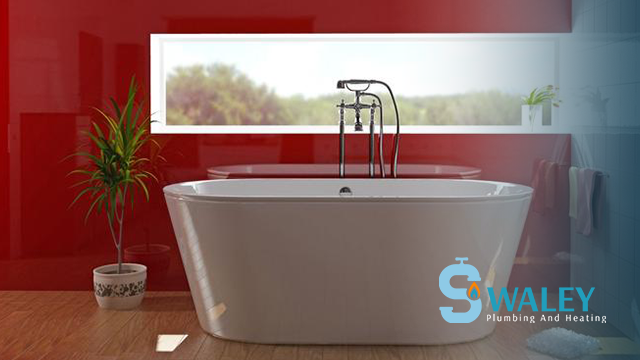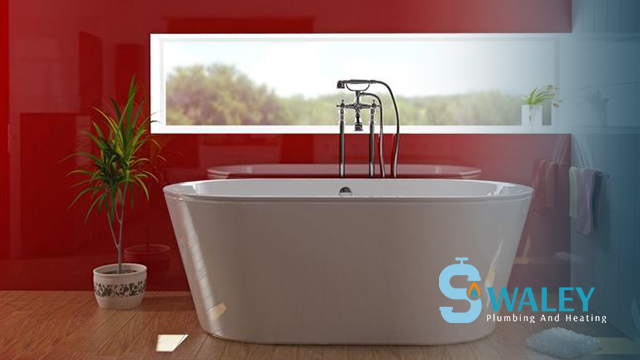Toilet Repair: Quick Fixes for Common Problems
A properly functioning toilet is an essential part of any household. However, like any other plumbing fixture, toilets are prone to problems over time. Whether it’s a leaking toilet, a clogged bowl, a weak flush, or a constantly running tank, these issues can be frustrating and disruptive. The good news is that many common toilet problems can be easily fixed with a few simple steps.
In this article, we will explore some quick fixes for common toilet problems, empowering you to tackle these issues on your own and save money on unnecessary repairs.
Understanding Common Problems That Require Toilet Repair
To get started, let’s take a closer look at the common problems that can arise with toilets. By understanding the root causes of these issues, you’ll be better equipped to address them effectively.
Leaking Toilet
One of the most common problems homeowners face is a leaking toilet. Not only can a leaking toilet waste water, but it can also lead to potential water damage in your bathroom. Several factors can contribute to a leaking toilet, including a faulty flapper valve, a damaged wax ring, or loose connections.
Causes of toilet leaks
Toilet leaks can be caused by various factors, such as a worn-out flapper valve that fails to create a watertight seal, a damaged wax ring between the toilet and the floor, or loose connections at the base or water supply line.
How to detect toilet leaks
Detecting a toilet leak can be done by adding a few drops of food colouring to the tank water and waiting to see if it seeps into the bowl. If the water in the bowl changes colour, you likely have a leak.
Clogged Toilet
A clogged toilet is another common issue that can quickly turn into a messy situation. The clog can occur due to excessive toilet paper, foreign objects, or even a build-up of debris in the pipes.
Causes of toilet clogs
Toilet clogs are often caused by flushing excessive amounts of toilet paper, attempting to flush items that are not meant to be flushed, or a build-up of mineral deposits and debris in the pipes.
Signs of a clogged toilet
If your toilet bowl fills up with water and takes a long time to drain or if it overflows when you flush, you likely have a clogged toilet.
DIY methods for unclogging a toilet
To unclog a toilet, you can try using a plunger. Ensure there is enough water in the bowl to cover the plunger’s rubber end, place the plunger over the drain hole, and vigorously plunge up and down to create suction and dislodge the clog. For stubborn clogs, a toilet auger can be used to break up the blockage.
Weak or Incomplete Flush
A weak or incomplete flush can leave you feeling frustrated and may require multiple flushes to clear the bowl properly.
Causes of weak or incomplete flushes
Weak or incomplete flushes can be caused by low water levels in the tank, a partially closed flapper valve, or mineral deposits blocking the rim holes.
How to fix a weak or incomplete flush
To fix a weak or incomplete flush, you can adjust the water level in the tank by adjusting the float mechanism or fill valve. Additionally, cleaning or unclogging the rim holes using a small brush can improve the flushing performance.
Constantly Running Toilet
A toilet that keeps running after you flush it is not only annoying but can also waste a significant amount of water over time.
Causes of a constantly running toilet
A constantly running toilet can be caused by a faulty flapper valve that fails to seal properly, a misaligned or kinked flapper chain, or a defective fill valve.
How to stop a running toilet
To stop a running toilet, you can adjust or replace the flapper chain to ensure it is properly aligned and has the correct tension. Additionally, cleaning or replacing the fill valve can help restore normal operation.
Toilet Tank Not Filling Properly
If you notice that the toilet tank takes an unusually long time to fill or does not fill to the correct level, there may be an underlying issue that requires attention.
Causes of a toilet tank not filling
A toilet tank may not fill properly due to a malfunctioning fill valve float, a clogged inlet valve, or a problem with the water supply line.
How to troubleshoot and fix the issue
To troubleshoot a toilet tank that is not filling properly, you can adjust or replace the fill valve float to ensure it reaches the correct level. Additionally, cleaning or replacing the inlet valve can help restore proper filling.
Quick Fixes for Toilet Repair
Now that we have covered the common toilet problems and their causes, let’s explore some quick fixes that you can try before calling a professional.
DIY solutions for toilet leaks
If you have a leaking toilet, you can start by checking and replacing a faulty flapper valve or tightening any loose connections at the base or water supply line. These simple steps can often resolve the issue and stop the leak.
Replacing faulty toilet flapper
To replace a faulty flapper, turn off the water supply. Then, remove the old flapper, and install a new one by following the manufacturer’s instructions.
Fixing loose or damaged water supply line
If the water supply line is loose or damaged, you can tighten the connections or replace the line with a new one.
DIY solutions for toilet clogs
For a clogged toilet, you can use a plunger to create suction and dislodge the blockage. If the clog persists, a toilet auger can be used to break up the obstruction.
Using a plunger to clear toilet clogs
Ensure there is enough water in the bowl to cover the plunger’s rubber end, place the plunger over the drain hole, and plunge vigorously to remove the clog.
Utilising a toilet auger for stubborn clogs
If a plunger doesn’t work, a toilet auger can be inserted into the drain and rotated to break up the stubborn clog. Follow the instructions provided with the auger for proper usage.
DIY solutions for weak or incomplete flushes
To fix a weak or incomplete flush, you can adjust the water level in the tank by adjusting the float mechanism or fill valve. Cleaning or unclogging the rim holes using a small brush can also help improve flushing performance.
Adjusting water level in the toilet tank
You can adjust the water level in the tank by either adjusting the float mechanism or the fill valve to ensure an adequate amount of water is released during each flush.
Cleaning or replacing clogged rim holes
If the rim holes are clogged with mineral deposits, use a small brush or pin to remove the deposits and improve the flow of water during flushing.
DIY solutions for a constantly running toilet
To stop a constantly running toilet, adjust or replace the flapper chain. Ensure it is properly aligned and has the correct tension. Cleaning or replacing the fill valve can also help resolve the issue.
Adjusting or replacing the flapper chain
Check the flapper chain for misalignment or excessive slack. Adjust it so that the flapper seats properly and the chain has the correct tension.
Cleaning or replacing the fill valve
Clean the fill valve to remove any debris that may be causing it to malfunction. If cleaning doesn’t solve the issue, consider replacing the fill valve with a new one.
DIY solutions for toilet tank not filling properly
If the toilet tank is not filling properly, you can troubleshoot the issue. Try adjusting or replacing the fill valve float. Cleaning or replacing the inlet valve can also help restore proper filling.
Adjusting or replacing the fill valve float
Check the fill valve float to ensure it is properly adjusted. If it is not reaching the correct level, adjust it or replace it with a new float.
Cleaning or replacing the inlet valve
If the inlet valve has a clog or malfunctioning, clean it to remove any debris. If cleaning doesn’t solve the issue, consider replacing the inlet valve.
When to Seek Professional Help For Toilet Repair
While you can resolve many toilet issues with DIY fixes, there are certain situations where it’s best to call a professional plumber.
Understanding the limits of DIY toilet repair
It’s important to recognise the limitations of DIY repairs. If you’re uncomfortable or unsure about tackling a particular toilet issue, it’s always better to seek professional assistance.
Signs that indicate the need for professional assistance
If you have tried the recommended DIY solutions and the problem persists or worsens, it’s time to call a professional plumber. Additionally, if you encounter complex issues such as sewer line problems or persistent leaks, professional help is necessary.
Call Swaley For Affordable Toilet Repair Work
A malfunctioning toilet can disrupt your daily routine. However, with the right knowledge and a few simple steps, you can resolve many common toilet problems. By understanding the causes of common issues like leaking toilets, clogged bowls, weak flushes, and constantly running tanks, you can implement quick fixes to restore proper functionality. Remember, regular maintenance and prompt attention to toilet problems can help prevent more significant issues down the line.
With these quick fixes for common toilet problems, you can save money and keep your plumbing running smoothly.




